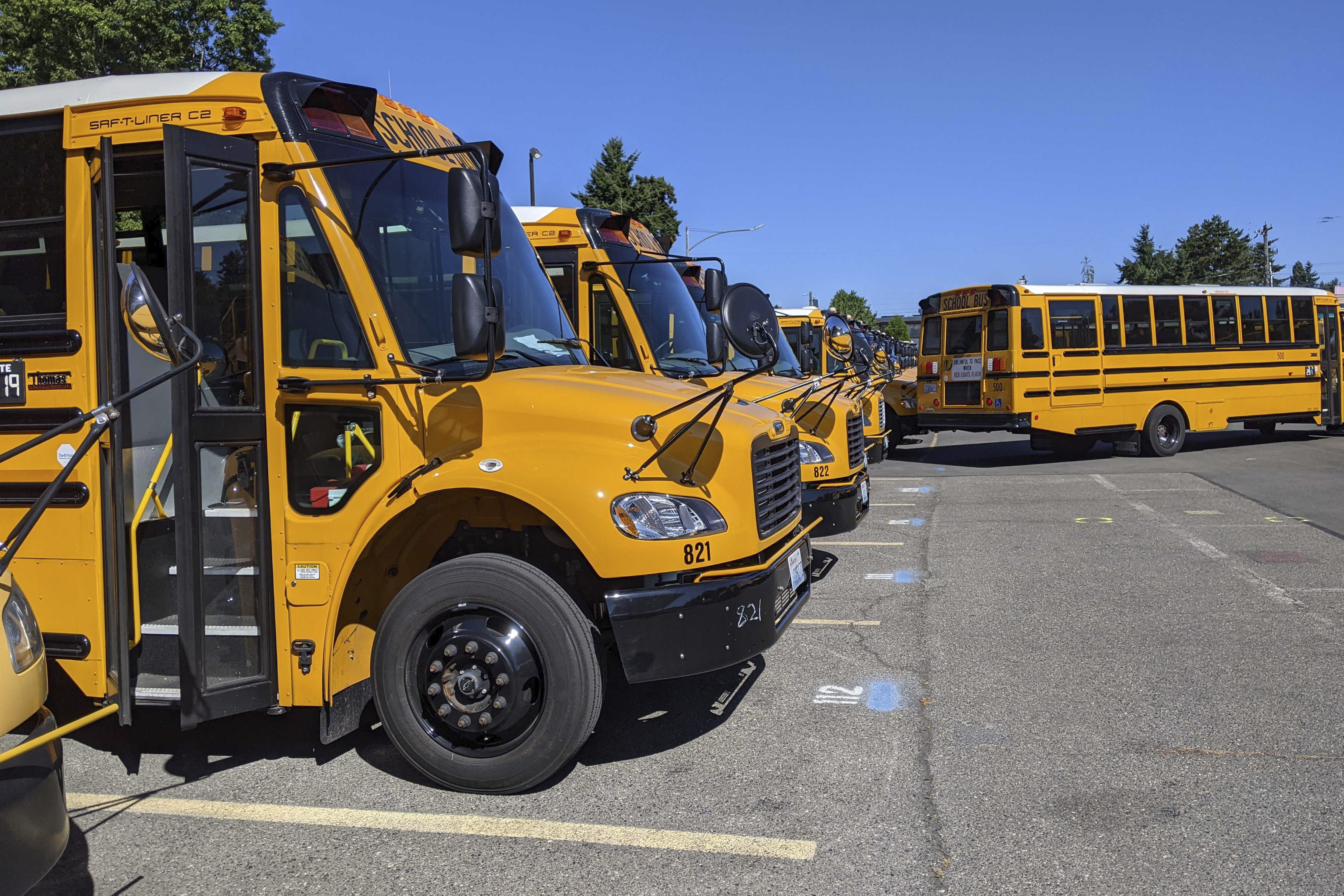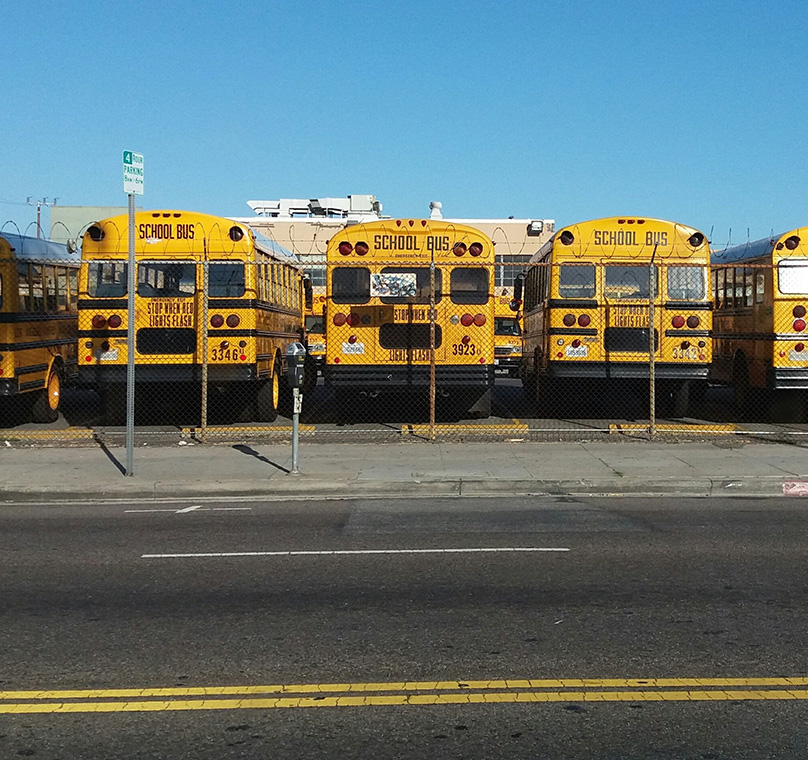A Delve into the Driver Shortage and Efforts to Shorten It

Across the U.S., school districts are struggling with a severe bus driver shortage, crippling the largest sector of the public transportation fleet in the country. The matter became exponential due to the COVID-19 pandemic but has been a creeping dilemma for decades due to previously uninterrupted issues in the industry. Today, though, districts around the country and federal agencies are deploying efforts to shift the industry for the better, creating appealing circumstances to attract school bus drivers and shorten the shortage.
The rise of the pandemic spawned 95% of k-12 schools across the U.S. to transition to remote learning. During this time, districts were given over $10 billion in federal aid, but many of them didn’t allocate any of it to pay transportation contractors. Bus companies survive based on the 180-day school year and many were forced to either furlough or lay off a significant portion of their drivers. Of course, these drivers went on to find other transportation jobs and have not returned as schools reopened, and even more have quit voluntarily due to health concerns. Transportation industry workers are second on the list of occupations that have been among the highest risk for COVID exposure, directly after the food and agriculture sector. Bus drivers are typically in their 50s – the age bracket that is most susceptible to severe illness or death from COVID-19. For most, the risk isn’t justified by the return.
For years though, the industry has struggled to hire and retain drivers because of stagnant wages and competition with the higher salaries of private companies. Earning a low wage for just 180 days of the school year doesn’t provide for a sustainable lifestyle. In previous years, nationally, bus drivers typically earn about $16 an hour, and in some states less than $12 an hour. Before being able to work, new drivers are required to obtain a commercial driver’s license (CDL), which can cost thousands of dollars and can take several weeks, depending on the individual’s experience. Further, drivers typically weren’t compensated for holidays, PTO, or any time without work. In recent years, private businesses, like Amazon, have poached school bus drivers across the nation, offering them higher pay, flexible hours, and regular, year-round compensation. Yellow bus businesses struggle to compete.
The National School Transportation Association survey reports that over 80% of school districts have been forced to alter their services due to the shortage of drivers. Further, 51% describe the issue as “severe,” and 65% reported the school bus driver shortage as the #1 problem they’re currently facing.
Beyond the serious implications on student attendance and their academics, the shortage affects their extracurriculars and more. Some schools have canceled sports because drivers weren’t available to transport students for practices and games. Because of the shortage of drivers, a school in Boston resorted to recruiting a private party bus equipped with neon lights and stripper poles to transport students for a field trip.
Districts and officials have begun to outsource in efforts to alleviate the severity. In Massachusetts, Ohio, and South Carolina, the states were forced to deploy hundreds of National Guardsmen to assist in driving kids to school. In Pennsylvania, some districts have even incentivized families with pay to opt-out of bus pickups.
Governments and districts are beginning to work together to make bus driving an enticing opportunity and part of the competitive workforce. In 2021, New York congressman Joseph Morelle went to the lengths of arguing that the U.S. Department of Transportation should waive the commercial driver’s license requirement for school bus drivers to alleviate the shortage. While understanding the general importance of the licensing and knowledge of safety, in a letter to U.S. Transportation Secretary Pete Buttigieg, Morelle stated that the requirements create hurdles for “states, schools, and employers to hire new school bus drivers,” and that they are “worsening existing shortages.” Morelle offers the solution of pursuing a school bus-specific license that would waive the requirements that pertain to long-haul truckers that aren’t relevant to school bus drivers.
In partial success, The U.S. Department of Education announced in January 2022 its joint temporary action with the U.S. Department of Transportation. They gave states the option of waiving the portion of the CDL skills test that identifies the “under the hood” engine components in order to alleviate some of the labor shortage challenges schools are facing.
“By allowing states to focus on the testing requirements that are critical to safety, we will get additional, qualified drivers behind the wheel to get kids to school safely,” said Secretary Buttigieg.
Still, the testing necessary to obtain a CDL with the endorsements needed to become a school bus driver is difficult and DMV systems are flawed. Connecticut has reported a 46% failure rate for new school bus drivers. In Oswego, there has been a reported failure rate of up to 90%. The lack of systematic, streamlined testing creates complications for applicants. The varying administrators of the test determine what they will check, ultimately making it difficult for applicants to know how to study and be prepared. This leads to, in most cases, applicants taking two to three times as long to obtain their CDL. Given the length of the school year, even willing applicants are then unable to help alleviate the driver shortage in a timely manner.
Ultimately, the efforts to recruit and retain school bus drivers have forced the industry standards to shift. In fact, now is one of the best times to become a school bus driver because of the multitude of benefits being offered across the country. The desperate nationwide need for bus drivers has morphed the occupation into one with competitive earnings, full health benefits, retirement plans, and more. In Osceola County, Florida, the wage has increased from $13.85 an hour to $15 an hour. A school district in Georgia is offering school bus drivers hourly pay of $26-plus, along with a bonus of up to $1,000. In Delaware, the committee responsible for drafting the state’s budget approved an increase in funding of $11.7 million to raise the minimum hourly rate for bus drivers, from about $15 to about $21 an hour. Districts across Nevada are raising hourly rates as well. In Clark County, drivers will be paid up to $29 an hour, and in Las Vegas, hourly pay was raised from about $15 to about $21 an hour. Overall, from 2010 to 2020, the average salary for a bus driver increased from about $30,000 to over $48,000.
While highlighted and embellished by the pandemic, workers’ demands in the school bus industry are essentially the same as they always have been. To alleviate the driver shortage issues, districts and governments nationwide must treat bus drivers as valued front-line workers. Testing and requirements for drivers must be relevant and fair, and overall, the process must be streamlined to promote an increased success rate.
As Congressman Morelle said, “We need to make sure that it is easy to hire the necessary workforce to get students into the classroom.”
Stay Connected
Routr is leading the way to simpler solutions. For more information, visit www.routr.com or contact adena@routr.com
Subscribe to our newsletter
Enter your email address below stay up to date on news, get updates and special offers.


